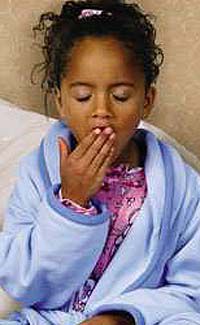| Children who have trouble sleeping could be fighting any of a number of sleeping disorders. |
When it comes to sleeping disorders, adults can often identify a handful of reasons that might be making it hard for them to catch some Zs. Be it added stress at work, bills mounting up or familial concerns, adults typically can point to one or two things that might be causing their insomnia.
In children, however, problems sleeping can be a little more perplexing. After all, kids don’t need to worry about bills or bosses breathing down their neck. But that doesn’t mean kids can’t experience trouble sleeping. Unfortunately, if a child is struggling to sleep, it could be indicative of any of the following sleeping disorders.
Night terrors: Night terrors typically occur in children between the ages of 3 to 12. Akin to nightmares, night terrors are characterized by periods of intense crying and fear, with an average episode lasting one to two minutes (though an episode can continue for up to 30 minutes). Unlike nightmares, night terrors are not recalled by the child the next day. In addition, while nightmares occur during REM (rapid eye movement) sleep, night terrors occur during non-REM sleep, typically 90 minutes after a child has fallen asleep.
Night terrors can be very disruptive and frightening for families, as a child will appear to be genuinely terrified even though they are asleep. Episodes are frequent and recurring, and are often accompanied by an elevated heart rate, an increased breathing rate, and heavy sweating. While there is no uniform cause of night terrors, stressful life events, fever, trouble sleeping, and certain medications that affect the nervous system might be causes.
Somnambulism: Commonly referred to as “sleepwalking” somnambulism occurs when a child sits up in bed with their eyes open, but in reality is not seeing anything. Children can remain in bed during an episode, or get up and walk around. In some cases, children might even leave the house. Episodes are more common in male school-aged children.
Parents can tell if their child is awake or sleepwalking by several indicators. Glassy eyes that are more fixated than attentive is one symptom. Children who walk around the house will have a blank stare in their eyes as opposed to their eyes moving around like they normally would when walking. If parents talk to a child during an episode, their responses, if they respond at all, will be slow and not necessarily coherent. In addition, if a child is not woken up during an episode but simply returns to sleep, they likely won’t recall the episode the next morning.
Nocturnal Enuresis: Typically a normal part of bladder control development, nocturnal enuresis (bedwetting) is common among children ages 4 and under. Primary nocturnal enuresis, however, is bedwetting that occurs in children over the age of 5 or 6. In such cases, children cannot consistently stay dry at night, and this could be the result of several factors.
Since bedwetting is not an intentional act, it might be due to delayed growth and development, low levels of ADH (antidiuretic hormone), social or psychological factors, or simply a small bladder capacity. In some cases, children sleep so soundly they simply don’t wake up when they need to relieve themselves.
Insomnia: This disorder is classified as trouble falling to sleep or maintaining sleep. Stress and depression are two underlying causes of insomnia in children. Oftentimes poor sleep habits, such as inconsistent sleep schedules, falling asleep outside of the bed and others can worsen insomnia.
Ways to combat long-term insomnia include:
•Avoiding caffeine, in any form, four to six hours before bedtime (chocolate, colas, tea).
•Avoiding a heavy meal in the evening. On the other hand, a light snack before bedtime may be sleep-inducing.
•Avoiding naps. If your child must take a daytime nap, it should be for less than an hour and should be completed before 3 p.m.
•Going to bed only when sleepy.
•Not using the bed or bedroom for non-sleeping activities, such as eating, talking on phone, homework, etc. Bed/bedroom should be used for sleeping purposes only.
Sleeping disorders are never intentional, as no child wants to have trouble sleeping. Punishment or shaming children will not help the problem, and could very well make it worse. Instead, consult your child’s physician if you suspect your child has a sleeping disorder.

